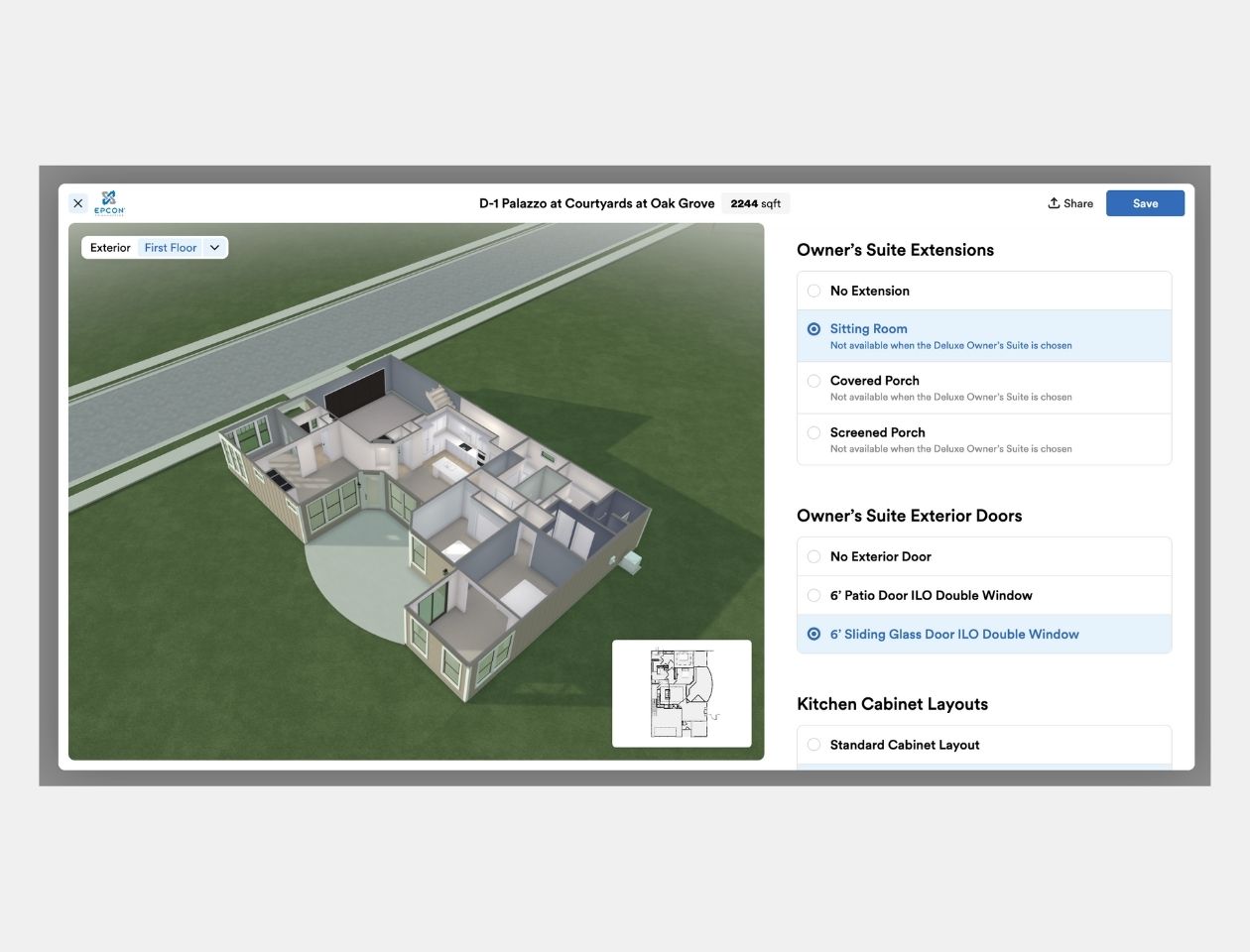Today’s homebuyers are changing how they shop for and purchase new homes. As digital tools become more sophisticated—and buyer expectations continue to evolve, builders are rethinking the role of physical model homes and design centers.
In our latest webinar, Do We Still Need Physical Models and Design Centers, a panel of industry experts - Thomas Holt, Amy McCormick, Matthew Hollis, and Heather Miller - explored how sales and design experiences are shifting, what today’s buyers expect, and how digital tools are helping builders sell more homes with less friction.
Here’s a quick recap of what we learned.
The New Buyer Journey: Hybrid is Here to Stay
Physical model homes and design centers have been industry staples for decades, but the rise of digital tools has reshaped the buyer journey. Across the panel, one thing was clear: today’s builders are embracing a hybrid approach that blends the best of both physical and digital experiences.
“We want to maintain that in-person experience—but at the same time, we’re making things easier for buyers by embracing technology.” — Heather Miller, Landmark 24 Homes
With buyers spending more time researching online, sales teams are leveraging digital tools to meet them earlier in the process, often long before model homes are even built.
Digital Tools Help Builders Sell Sooner (and Smarter)
For Epcon Communities, pre-selling homes before roads are paved isn’t unusual. That’s why they’ve made Higharc Photoreal's home walkthroughs and virtual streetscapes central to their sales process.
“We start selling before the streets are in. The digital tools give buyers the confidence to move forward and they’re helping us sell more structural options than ever before.” — Amy McCormick, Epcon Franchising
Buyers can explore photorealistic 3D models of homes and communities, interact with floorplans, and personalize options—all from a sales center kiosk, a sales agent’s laptop, or their own device at home.
Key Benefits:
- Shorter sales cycles
- Higher engagement in design selections
- Increased structural option sales
- Confident, informed buyers
Physical Models Still Have a Role But That Role Is Changing
While digital tools are gaining traction, physical models remain valuable for many builders. Lexar Homes, which builds custom homes across multiple states, still relies heavily on showrooms and model homes to establish trust and demonstrate craftsmanship.
“People are buying the experience as much as they’re buying the product. For us, that personal connection still matters.”
— Matthew Hollis, Lexar Homes
But even Lexar is exploring digital-first strategies for new offerings focused on affordability and efficiency.
Digital Design Centers Streamline Selections and Boost Satisfaction
Landmark 24 Homes uses Higharc’s digital design center tools to streamline the selections process and help buyers visualize their new home.
“We’ve had buyers walk in and say, ‘Just give me the Liv Lux package,’ and they’re ready to go. Appointments that used to take hours now take minutes.” — Heather Miller, Landmark 24 Homes
By offering curated option packages with visual previews, Landmark 24 has simplified the process for both buyers and sales teams. The result? Faster appointments and higher customer satisfaction scores.
What’s Next: Will Physical Models Disappear?
We don’t know exactly what the future holds for physical model homes and design centers, but a few things are clear:
- Buyers expect flexibility: A hybrid experience that blends physical and digital is no longer optional.
- Digital tools are closing deals: Builders are seeing faster sales cycles and increased buyer confidence with interactive tours and design tools.
- Operational efficiency matters: Digital design centers streamline selections, boost structural option sales, and simplify the customer experience.
With that in mind, we wrapped the webinar with a rapid-fire question: How many years until physical model homes disappear entirely?
- Heather believes physical models will never fully go away, especially for buyers who need to experience the quality and layout firsthand.
- Amy said it might take 25 years before physical models are phased out, but for many product types and buyers, they’ll always play a role.
- Matthew predicted some builders — especially those offering streamlined, efficient product lines — could phase them out within two years.
- Thomas Holt added that buyer behavior evolves quickly, and builders need to stay flexible and ready to adapt.
Watch the Replay
The shift to digital is no longer a trend, it’s an expectation. Builders who embrace hybrid experiences are seeing faster sales, more engaged buyers, and better operational efficiency.
Want to dive deeper into this conversation?
You can watch the full webinar on-demand now and see how leaders from Epcon Communities, Lexar Homes, and Landmark 24 Homes are blending physical and digital experiences to sell more homes faster.
Let’s explore how Higharc can fit into your sales strategy. Book a demo and see how we’re helping builders modernize their model home and design center experience.
See higharc in action
Discover how Higharc can empower your team to conquer change, modernize your buyer experience, and decrease cycle times.
Book a demo

.jpg)
.png)




.png)











%20(1260%20x%20960%20px).jpg)
%20(1260%20x%20960%20px).jpg)

.jpg)

.jpg)



















